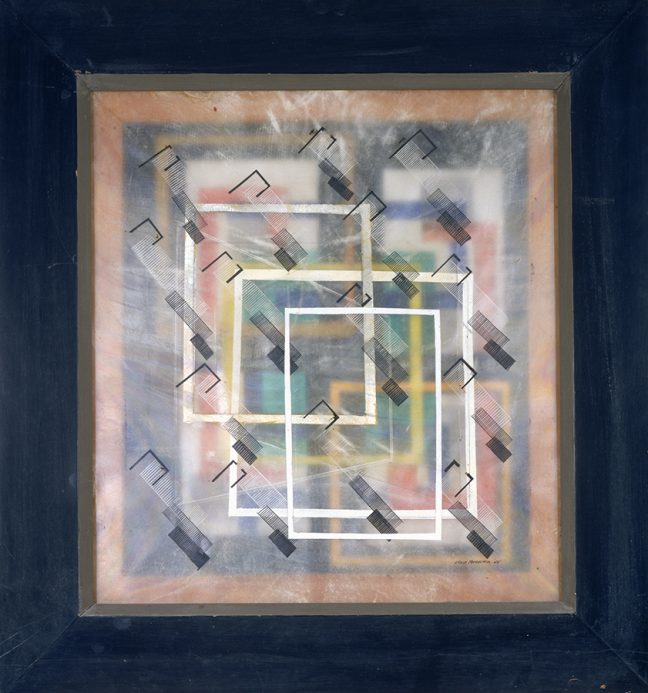Irene Rice Pereira cared deeply about light, space, and vision. She was a poet and a philosopher as well as an artist. Influenced by the Bauhaus, the German art school active between 1919 and 1933 that sought to integrate art and life, Pereira experimented with a variety of less common materials and was an early adopter of acrylic—sometimes called plastic—paint. She defined her approach to abstraction as a search for “plastic equivalents for the revolutionary discoveries in mathematics, physics, biochemistry and radioactivity.”
Vision combines the familiar media of oil and parchment with Masonite, a kind of malleable, mass-produced board first patented in 1924 and made out of compressing wood fibers. The translucent parchment plays with the eye’s perception of depth. Painstakingly painted grey, white, and black ladder-like shapes sit on the surface of the work and hover over painted squares outlined in bright primary colors.
Pereira’s work was shown in ten different exhibitions between 1948 and 1957 at Barnett Aden, the Washington, D.C., gallery that Alma Thomas helped found.

